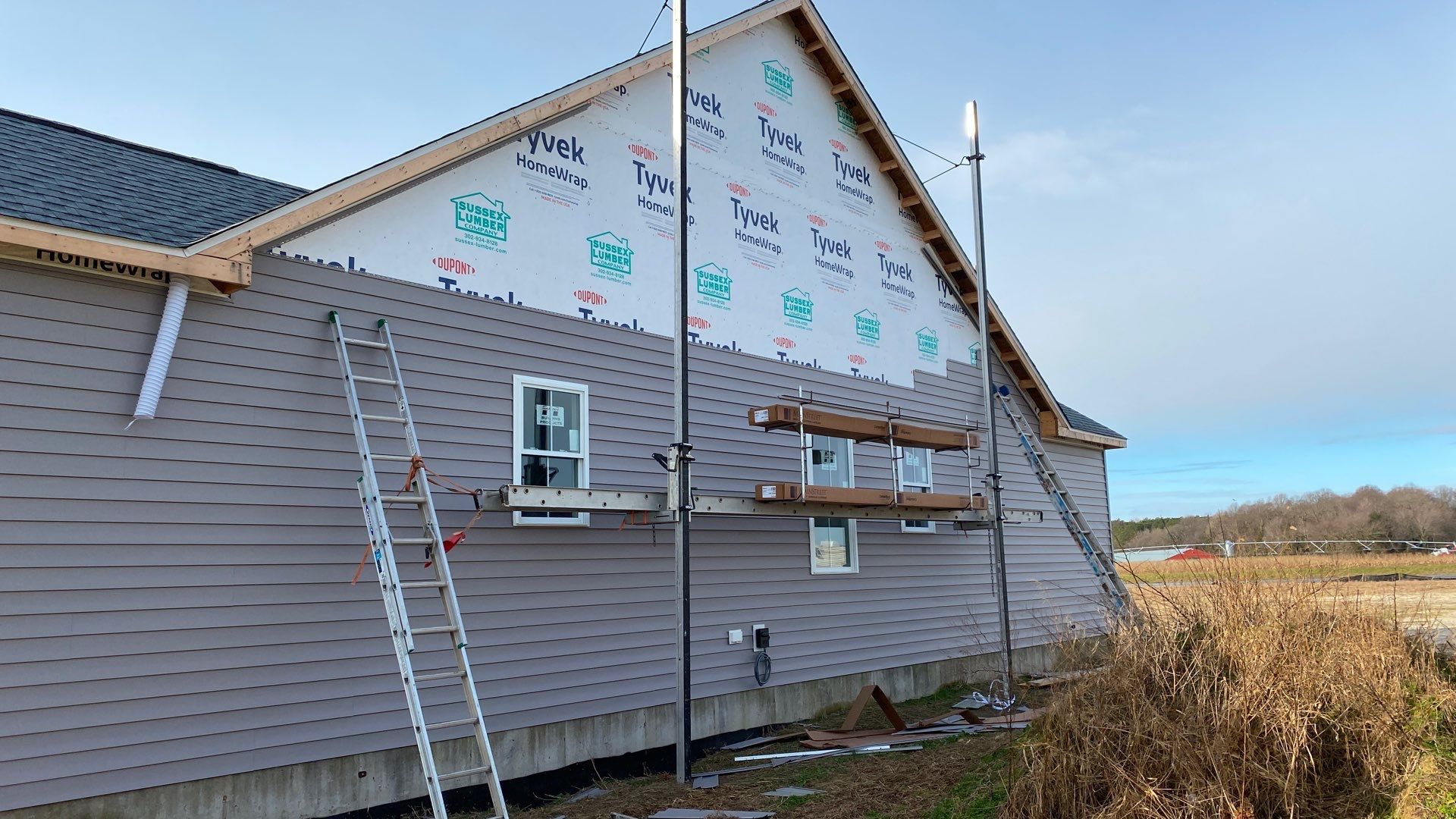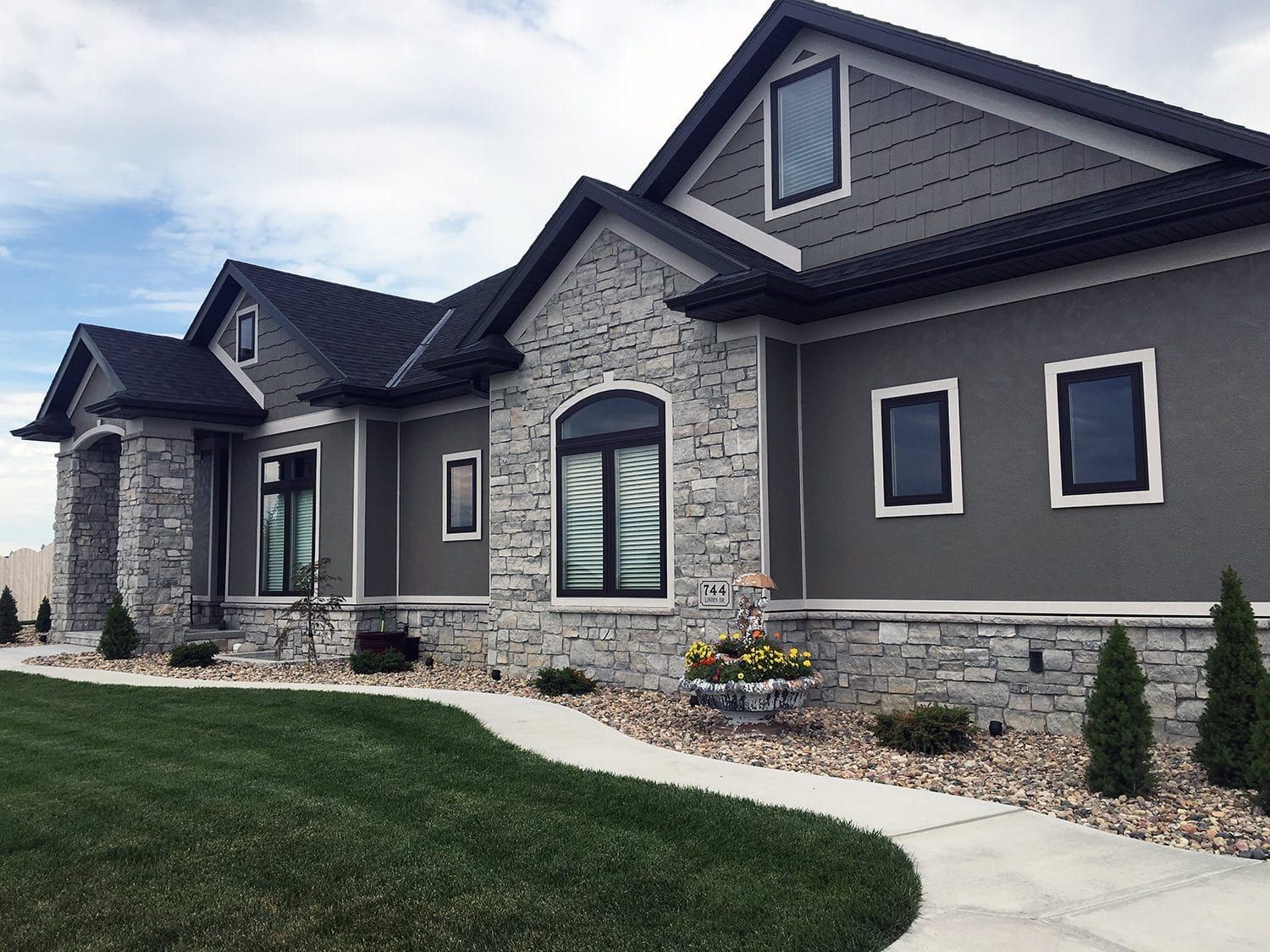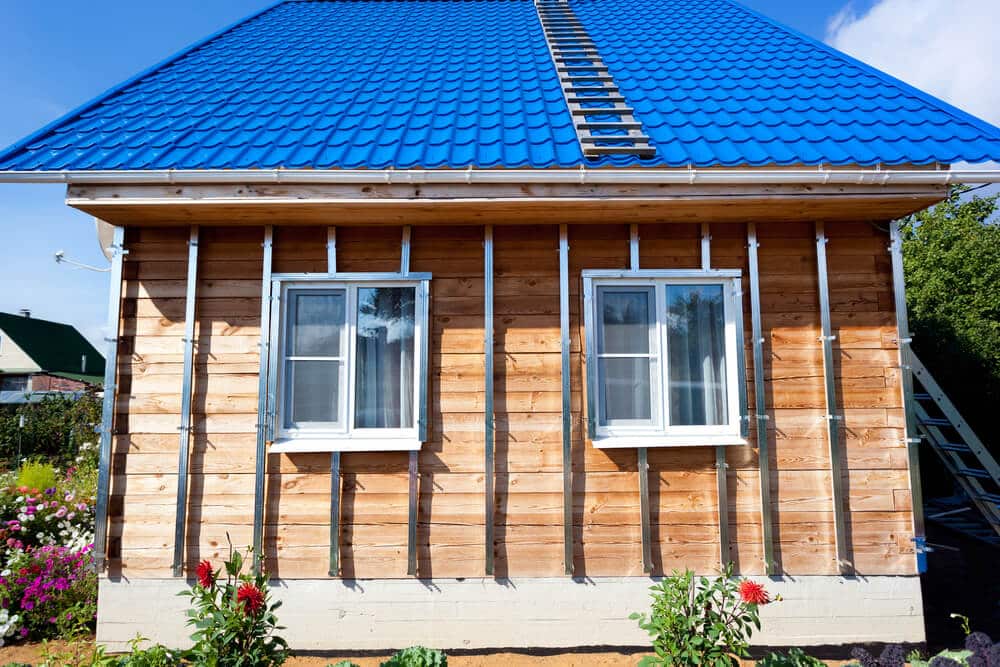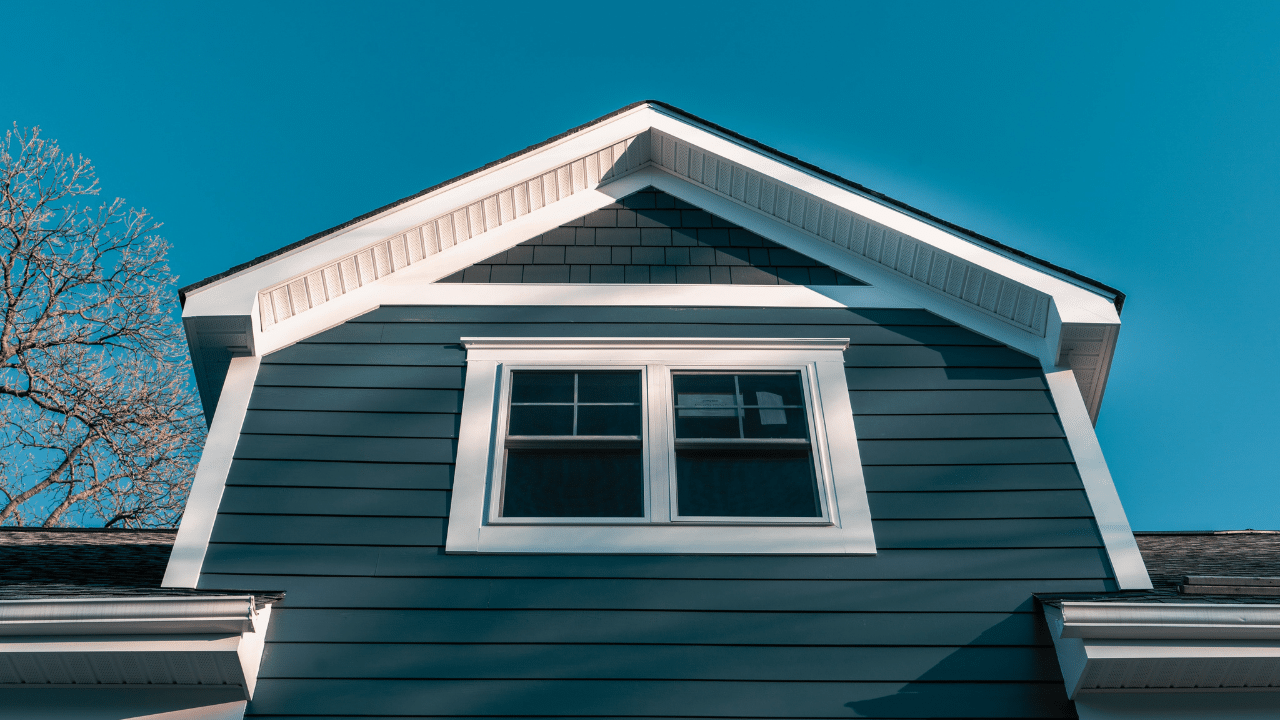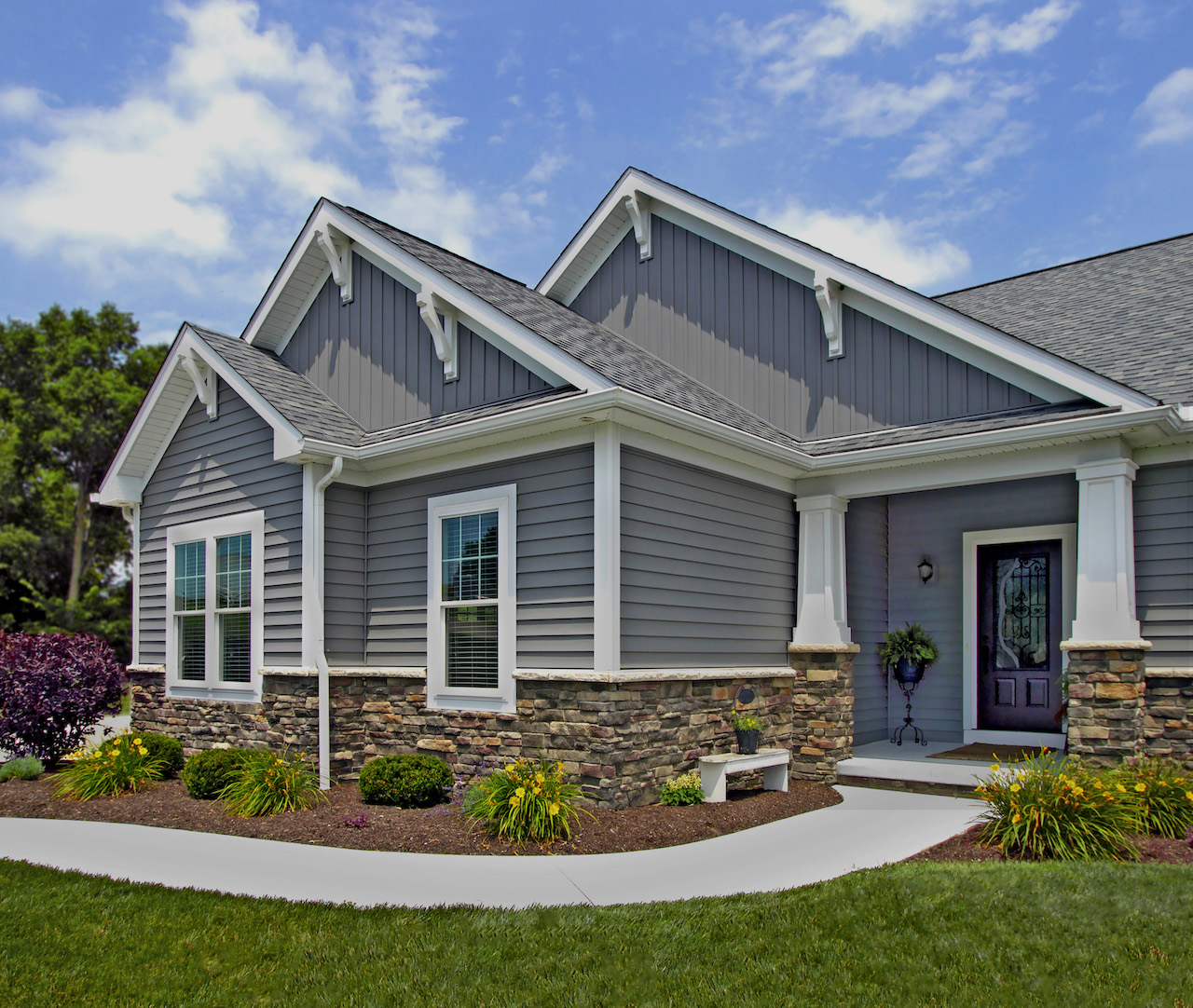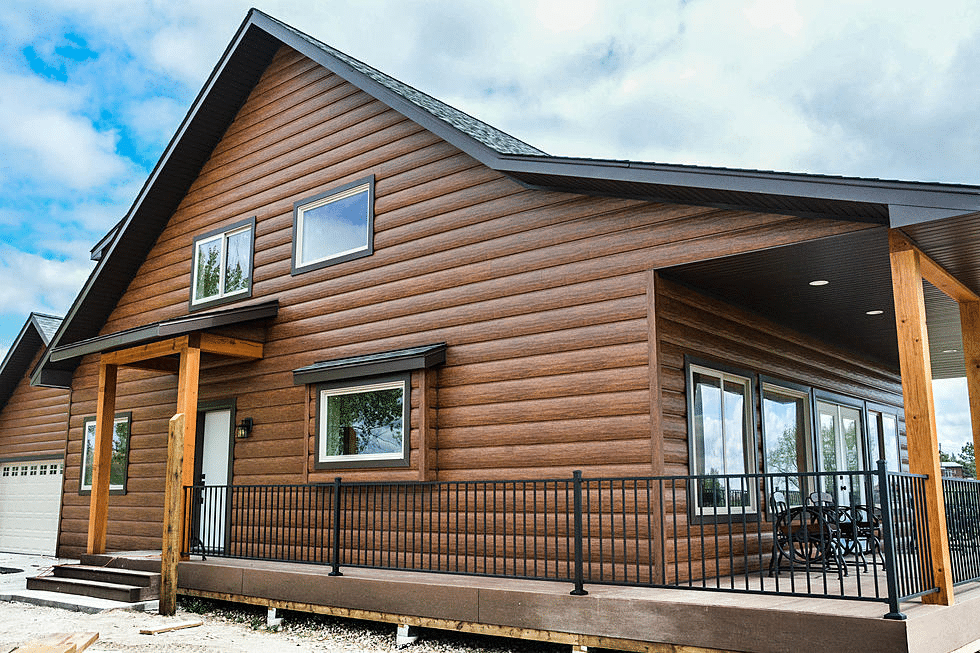Vinyl Insulated Siding: A Homeowners Guide
Vinyl insulated siding offers a compelling blend of aesthetics, energy efficiency, and durability. This versatile material provides a cost-effective way to enhance your home’s curb appeal while simultaneously reducing energy bills. We’ll explore everything from installation and maintenance to the long-term benefits and environmental considerations, giving you a complete picture of this popular siding choice.
From the manufacturing process and diverse style options to addressing common installation and maintenance challenges, this guide aims to equip homeowners with the knowledge needed to make informed decisions about their home’s exterior.
Introduction to Vinyl Insulated Siding
Vinyl insulated siding is a popular exterior cladding option known for its durability, low maintenance, and energy efficiency. It’s a composite material combining a rigid foam insulation core with a durable vinyl outer layer. This unique construction offers several advantages over traditional siding materials.
Vinyl insulated siding is manufactured through an extrusion process. PVC resin, along with various additives for color, impact resistance, and UV protection, is melted and then forced through a die to create the desired profile and thickness. The foam core is typically made of polyurethane or polyisocyanurate, providing excellent insulation properties. The vinyl skin is then fused to this core, creating a single, integrated panel.
Advantages of Vinyl Insulated Siding
Vinyl insulated siding offers several key benefits compared to alternatives like wood and aluminum siding. Its inherent insulation significantly reduces energy loss through the walls of a home, leading to lower heating and cooling costs. Unlike wood, it’s highly resistant to rot, insect infestation, and warping, eliminating the need for frequent repairs and maintenance. Compared to aluminum, vinyl insulated siding offers superior impact resistance and doesn’t dent or scratch as easily. Furthermore, vinyl siding is available in a wide array of colors and styles, offering considerable aesthetic flexibility.
Styles and Colors of Vinyl Insulated Siding
Vinyl insulated siding comes in a variety of styles to mimic the look of other materials, such as wood clapboard, shakes, or shingles. Manufacturers offer profiles designed to replicate the appearance of traditional wood siding, providing a classic look without the maintenance challenges. Some styles feature a more contemporary aesthetic with sleek, smooth surfaces. The color options are extensive, ranging from traditional earth tones to vibrant hues and even textured finishes that simulate the look of natural wood grain. For example, a homeowner might choose a deep brown clapboard style to complement a traditional home, or a clean white lap siding for a modern farmhouse. The diversity in styles and colors allows for a high degree of customization to suit any architectural style and personal preference.
Installation and Maintenance of Vinyl Insulated Siding
Installing vinyl insulated siding offers a durable and aesthetically pleasing exterior for your home. Proper installation ensures longevity and performance, while regular maintenance prevents damage and preserves its appearance. This section details the installation process and outlines essential maintenance procedures.
Vinyl Siding Installation
Installing vinyl siding is a multi-step process requiring careful planning and execution. Improper installation can lead to issues such as leaks, warping, and a less-than-attractive finish. The following table outlines the key steps, necessary tools, and potential challenges.
| Step | Tools Needed | Potential Challenges | Solutions/Tips |
|---|---|---|---|
| Preparation: Measuring and Planning | Measuring tape, level, pencil, calculator | Inaccurate measurements, uneven walls | Double-check measurements, use a laser level for accuracy, address wall imperfections before installation. |
| Framing and Sheathing Inspection | Hammer, pry bar, inspection tools | Rotting wood, damaged sheathing | Repair or replace damaged framing and sheathing before siding installation. |
| Installation of Starter Strips and J-Channel | Hammer, nails, saw, level | Improper alignment, gaps | Ensure proper alignment and use appropriate fasteners to secure the strips and channels. |
| Installing the Siding Panels | Measuring tape, utility knife, siding nails, nail gun (optional) | Difficult cuts around windows and doors, panel warping | Use sharp utility knife for clean cuts, pre-drill holes for difficult areas, and acclimate panels to the temperature before installation. |
| Finishing: Corners, Trim, and Accessories | Various trim pieces, coping saw, miter saw | Improper fitting of trim pieces | Precise cuts and proper fitting of trim are essential for a professional look. |
Vinyl Siding Maintenance
Regular maintenance is crucial for preserving the appearance and extending the lifespan of your vinyl siding. This involves simple procedures that can prevent significant problems down the line.
- Regular Cleaning: Wash your siding at least once or twice a year using a garden hose and a mild detergent solution. Avoid harsh chemicals or abrasive cleaners. A soft-bristled brush can be used to remove stubborn dirt.
- Repairing Minor Damage: Small dents or scratches can often be repaired by gently warming the affected area with a hairdryer to reshape the vinyl. More significant damage may require replacing individual panels.
- Inspecting for Issues: Regularly inspect your siding for loose panels, cracks, or signs of damage. Addressing minor problems promptly can prevent more extensive repairs later.
- Caulk Maintenance: Inspect and replace any cracked or deteriorated caulking around windows, doors, and other openings to prevent water intrusion.
Lifespan and Warranty Information
Vinyl insulated siding typically boasts a lifespan of 20-50 years or more, depending on the quality of the product, installation, and maintenance. Manufacturers offer warranties that vary in length and coverage. It’s essential to review the specific warranty details provided by the manufacturer for your particular siding product. For example, a high-quality vinyl siding might have a 50-year warranty against fading and defects, while a lesser-quality option may only offer a 20-year warranty. Always keep your warranty information in a safe place.
Energy Efficiency and Cost-Effectiveness
Vinyl insulated siding offers a compelling combination of energy efficiency and long-term cost savings, making it a smart investment for homeowners. Its superior insulating properties translate directly into lower energy bills, while its durability minimizes the need for frequent replacements or repairs. This section will delve into the specifics of these benefits.
The energy efficiency of vinyl insulated siding stems from its unique construction. Unlike traditional vinyl siding, insulated vinyl incorporates a foam core, usually made of polyurethane or polyisocyanurate, sandwiched between two layers of vinyl. This foam core acts as a significant thermal barrier, reducing heat transfer between the interior and exterior of your home. This reduction in heat transfer minimizes the strain on your heating and cooling systems, resulting in lower energy consumption and, consequently, lower utility bills.
Comparison of Energy Efficiency
The following table compares the energy efficiency of vinyl insulated siding to other common siding materials. Note that R-values can vary depending on the thickness and type of insulation used. These figures represent average values for commonly available products.
| Siding Material | R-Value (per inch) | Typical Thickness (inches) | Approximate Overall R-Value |
|---|---|---|---|
| Vinyl (non-insulated) | 0.0 | 0.05 – 0.1 | Negligible |
| Vinyl Insulated | 3-4 | 0.5 – 1 | 15-40 |
| Wood | 0.9 | 1 | 0.9 |
| Fiber Cement | 0.2 | 0.5 – 1 | 0.1 – 0.2 |
Long-Term Cost Savings
While the initial investment in vinyl insulated siding may be slightly higher than that of non-insulated options, the long-term cost savings associated with reduced energy consumption often outweigh this initial expense. For example, a homeowner in a climate with significant heating and cooling needs might see a reduction in their annual energy bills of several hundred dollars, or even more, depending on the size of their home and the efficiency of their HVAC system. Over the lifespan of the siding (typically 20-50 years), these savings can accumulate to thousands of dollars.
Government Incentives and Rebates
Many government agencies and utility companies offer incentives and rebates for energy-efficient home improvements, including the installation of vinyl insulated siding. These programs vary by location and may be subject to specific eligibility requirements. Homeowners should check with their local utility company, state energy office, and federal programs like the Department of Energy’s Energy Star program to determine what incentives might be available in their area. For instance, some states offer tax credits for energy-efficient upgrades, while others provide direct rebates or low-interest loans. It’s crucial to research these programs thoroughly before undertaking such a project to maximize potential savings.
Environmental Impact and Sustainability
Vinyl insulated siding, while offering numerous benefits in terms of energy efficiency and longevity, presents environmental considerations throughout its lifecycle, from manufacturing to disposal. Understanding these impacts is crucial for making informed decisions about building materials and promoting sustainable practices.
The environmental impact of vinyl siding stems primarily from its production and end-of-life management. Manufacturing vinyl requires significant energy consumption, primarily from fossil fuels, contributing to greenhouse gas emissions. The extraction and processing of raw materials, including petroleum and chlorine, also have environmental consequences. Furthermore, the durability of vinyl siding, while a benefit for homeowners, means it remains in landfills for extended periods, contributing to waste accumulation.
Manufacturing and Disposal Impacts
The production of vinyl siding involves several stages with associated environmental consequences. The extraction of petroleum and natural gas, the primary feedstock for vinyl, releases greenhouse gases and can lead to habitat destruction. The manufacturing process itself is energy-intensive, requiring significant electricity and releasing volatile organic compounds (VOCs) and other pollutants into the atmosphere. Disposal of vinyl siding poses a challenge due to its non-biodegradable nature. Landfilling contributes to environmental pollution and the depletion of natural resources. Incineration, while reducing landfill burden, can release harmful dioxins and furans.
Comparison with Other Siding Materials
Choosing a siding material involves weighing various factors, including environmental impact. Let’s compare vinyl insulated siding with some alternatives:
The following table contrasts the environmental footprints of several common siding materials:
| Material | Manufacturing Energy Consumption | Greenhouse Gas Emissions | Recyclability | Durability |
|---|---|---|---|---|
| Vinyl Insulated Siding | High | Moderate to High | Limited | High |
| Wood Siding | Moderate | Moderate | Moderate (depending on treatment) | Moderate to High (depending on species and maintenance) |
| Fiber Cement Siding | Moderate to High | Moderate | Limited | High |
| Aluminum Siding | High | Moderate | High | High |
| Steel Siding | High | Moderate | High | High |
Note: These are general comparisons and the actual environmental impact can vary depending on specific manufacturing processes, sourcing of materials, and end-of-life management.
Recycling and Sustainable Practices
Recycling options for vinyl siding are limited compared to some other materials. While some manufacturers offer recycling programs, these are not widely available. Sustainable practices related to vinyl siding primarily focus on minimizing waste and promoting responsible disposal. This includes choosing recycled-content vinyl siding when available, and ensuring proper disposal through recycling programs or responsible landfilling to minimize environmental impact. Furthermore, extending the lifespan of existing vinyl siding through proper maintenance can reduce the need for replacement and minimize the overall environmental footprint.
Design and Aesthetics
Vinyl insulated siding offers a surprising degree of design flexibility, allowing homeowners to achieve a wide range of aesthetic looks for their homes, from classic to contemporary. Its versatility in color, texture, and style makes it a popular choice for various architectural designs. The ability to mimic the appearance of wood, stone, or stucco without the associated maintenance costs further enhances its appeal.
Vinyl Siding in Different Architectural Styles
Vinyl siding’s adaptability is showcased in its effective use across diverse architectural styles. For example, a traditional Cape Cod home, characterized by its low-pitched roof, symmetrical facade, and often dormers, can benefit from vinyl siding in a creamy white or muted grey, mimicking the look of clapboard. The clean lines and simple design of the siding complement the home’s classic charm. In contrast, a modern farmhouse, defined by its clean lines, large windows, and often a metal roof, might use vinyl siding in a deep charcoal grey or a warm, earthy tone to create a sophisticated, contemporary feel. The siding’s ability to mimic the texture of wood, particularly with embossed designs, enhances the rustic aesthetic of this style. Finally, a Craftsman-style home, known for its low-pitched roof, exposed rafters, and use of natural materials, might incorporate vinyl siding in a rich brown or deep green, again using textured options to replicate the look of wood shingles or shakes. The color choices would emphasize the home’s natural and earthy aesthetic.
Examples of House Facades Using Vinyl Siding
Here are three distinct house facade designs utilizing vinyl insulated siding:
Design 1: Classic Colonial This design features a two-story colonial home with white vinyl siding that mimics the look of traditional clapboard. Dark green shutters and a dark brown front door provide a striking contrast, emphasizing the home’s classic architectural details. The roof is a dark grey asphalt shingle, complementing the dark accents. The overall impression is one of timeless elegance and sophistication. Landscaping, including neatly trimmed hedges and flower beds, further enhances the classic aesthetic.
Design 2: Modern Farmhouse This design utilizes a light grey vinyl siding with a subtle wood grain texture on a single-story ranch-style home. The siding’s texture adds depth and warmth to the otherwise clean lines of the design. Black windows and a black front door provide a bold contrast, adding a modern touch. The roof is a standing seam metal roof in a dark grey, complementing the siding and windows. The overall impression is one of sleek modernity with rustic undertones. A large front porch with simple wooden railings and comfortable seating further enhances the relaxed farmhouse feel.
Design 3: Contemporary Coastal This design showcases a two-story home with light blue vinyl siding, evoking a sense of airy coastal living. White trim around the windows and doors adds a crisp contrast. A light grey shingle roof complements the blue siding, creating a harmonious color palette. The overall feel is bright, airy, and relaxed, perfectly suited to a coastal or beachside location. Landscaping featuring native grasses and drought-tolerant plants would further enhance this aesthetic.
Impact of Siding Colors and Textures
The choice of color and texture for vinyl siding significantly impacts a home’s aesthetic appeal. Darker colors, such as deep blues, greens, or greys, can create a sense of sophistication and drama, while lighter colors, such as whites, creams, or pastels, can make a home appear larger and brighter. Textured siding, mimicking wood grain or stone, adds depth and visual interest, while smooth siding creates a more modern and minimalist look. Careful consideration of the surrounding environment and architectural style is crucial to selecting colors and textures that complement the home and enhance its curb appeal. For instance, a home in a wooded area might benefit from earth-toned siding that blends with the natural surroundings, while a home in a bustling urban setting might benefit from a bolder color choice that stands out.
Troubleshooting and Common Problems
Vinyl insulated siding, while durable, can experience issues. Understanding common problems and their solutions is crucial for maintaining the longevity and aesthetic appeal of your home’s exterior. Proper installation and regular maintenance significantly reduce the likelihood of these problems.
Common Vinyl Siding Problems and Solutions
Addressing problems promptly prevents minor issues from escalating into costly repairs. The following table outlines common problems, their causes, and solutions.
| Problem | Cause | Solution | Prevention |
|---|---|---|---|
| Warping or buckling | Exposure to extreme heat, improper installation (inadequate expansion gaps), or damage during installation. | If minor, warping might self-correct as temperatures moderate. For significant warping, replacement panels may be necessary. Consult a professional for larger areas. | Ensure proper installation with adequate expansion gaps. Avoid direct, prolonged exposure to intense heat, such as using a heat gun too close to the siding. |
| Cracking or splitting | Impact damage from falling objects, improperly handled tools during installation, or exposure to extreme cold. | Replace the damaged panel(s). For minor cracks, you might be able to use a vinyl repair kit, but replacement is usually the better long-term solution. | Protect siding from impact damage by trimming overhanging branches and installing protective barriers. Use caution when working near the siding to avoid accidental damage. |
| Fading or discoloration | Prolonged exposure to sunlight (UV rays), environmental pollutants, or using harsh cleaning agents. | Regular cleaning with mild soap and water can help maintain color. Severe fading may require replacement panels, but this is often not necessary. | Choose siding with UV inhibitors. Regularly clean the siding to remove dirt and pollutants. Avoid harsh chemicals. |
| Loose or damaged fasteners | Improper installation, expansion and contraction of the siding due to temperature changes, or strong winds. | Tighten loose fasteners or replace damaged ones. In cases of significant movement, consider professional inspection to assess the installation. | Use appropriate fasteners and ensure proper installation techniques are followed. Regularly inspect fasteners, especially after severe weather. |
Preventing Future Problems
Regular inspection and proactive maintenance are key to preventing issues. This includes checking fasteners, cleaning the siding, and addressing minor problems before they become major ones. A yearly inspection, particularly after harsh weather, is recommended. This preventative approach saves time, money, and protects the investment in your home’s exterior.
Closure
Ultimately, vinyl insulated siding presents a practical and attractive solution for homeowners seeking to improve their home’s energy efficiency, curb appeal, and long-term value. By understanding the advantages, disadvantages, and maintenance requirements, you can confidently decide if vinyl insulated siding is the right choice for your home improvement project. Weighing the initial investment against the potential long-term savings and environmental impact will help you make the best decision for your specific needs and circumstances.



